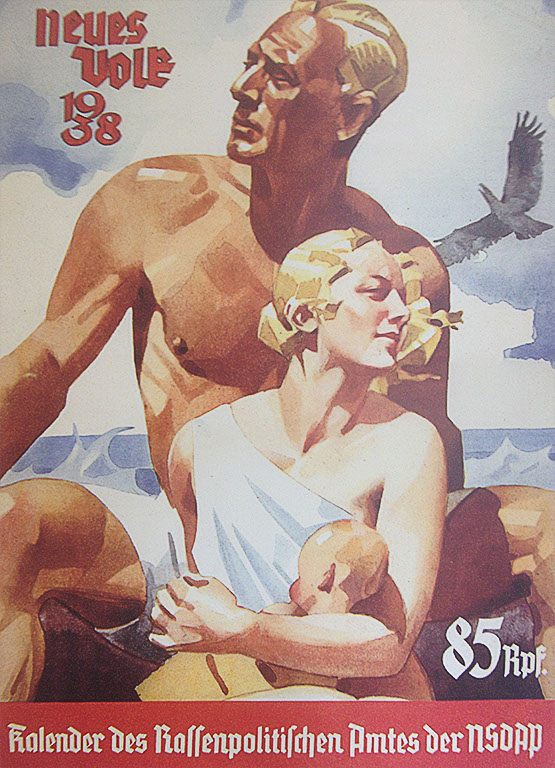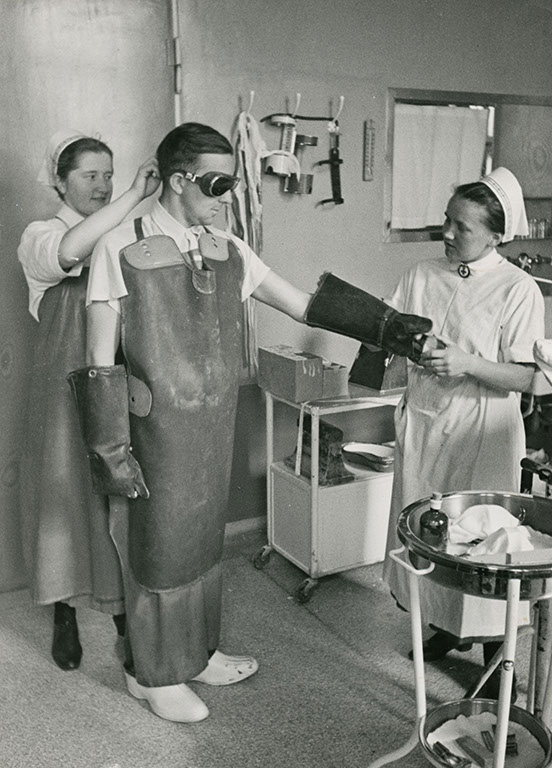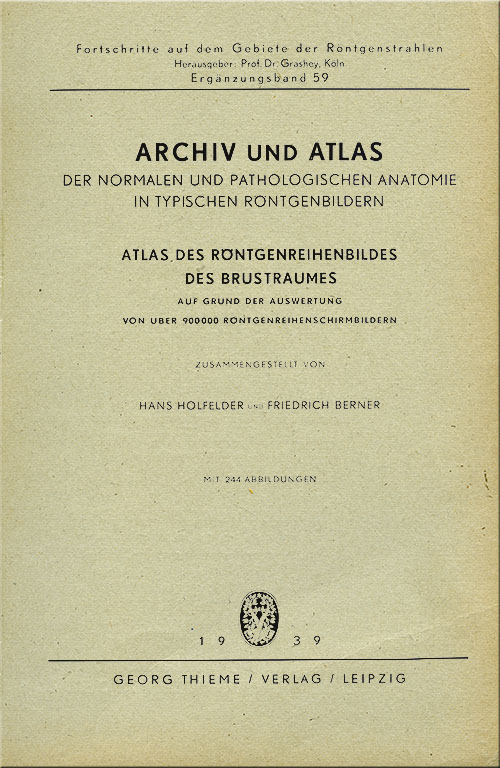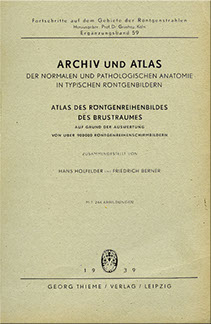
Positive Eugenics
In accordance with its charter, the German Radiological Society also had to provide “consulting and support to the Reich Physicians’ Chamber in order to evaluate radiology and X-ray research in the service of national health” during the National Socialist period. The provisioning of diagnostic and therapeutic radiological care for individual patients was expanded to include a perspective on national medicine that served “the purposes of national hygiene through mass screenings and the prevention of health impairments in the area of eugenics.”
In addition to general principles regarding the preservation of an individual’s health, which were always part of a physician’s self-understanding as a general practitioner or family physician, were added the worries of the quantitative and qualitative composition of the “body of the nation.” This “body” was meant to be improved via the targeted support of “valuable” components of the population (positive eugenics), which stood in contrast to the “elimination” of “inferior elements” via negative eugenic measures. In order for the ideal of a healthy, strong, “German-blooded” family to become reality in future generations, special importance had to be assigned to the protection of people’s genetic composition and its respective “value” for society.
The discussion of possible negative radiation effects on the gonads (“radiation as deadly poison”) had worried the broader public since the early 1930s. Careful compliance with radiation protection guidelines, which were constantly being further developed and improved, was fundamental to the professional practice of radiology. Eugenic discourse introduced the new dimension of the threat of radiation damage to the “body of the nation.”
As early as the 1920s, there emerged the notion that it was inappropriate, from a race hygiene perspective, to consider “ruining the gene pool of well-disposed people in the service of the ill and their weaknesses,” as Fritz Lenz put it in a broadly distributed manual.
He therefore promoted eugenically indexed protection of the “gene pool” of radiologists, especially in the therapeutic application of radiology. Saturated in the belief that people inherently had different value, he further proposed that this work should be reserved for people whose reproduction was out of the question.
Publications by Fritz Lenz, especially the “Manual of Human Genetics and Race Hygiene,” known by its authors’ names as “Baur/Fischer/Lenz,” profoundly shaped National Socialist ideas about eugenics and race hygiene.
Museum für Kunst und Gewerbe Hamburg, photograph no. 94.35 & 363.15
DRK nurses clothe a physician in radiation protection clothing (Ullstein-Bild, 1004331226)
Holfelder, Hans/Friedrich Berner: Atlas des Röntgenreihenbildes des Brustraumes. Auf Grund der Auswertung von über 900.000 Röntgenreihenschirmbildern, Leipzig 1939
Menu
Deutsche Röntgengesellschaft e.V. © 2018
| Impressum | Datenschutz



